After securing a 2-2 draw in the Maracanã, Corinthians hosted Fluminense for the second leg of the Copa do Brasil semi-final. Unlike the other semi-final, between Flamengo and São Paulo, this was a competitive battle until the very end. Fluminense are currently one of the most tactically intriguing teams in the world, and contrastingly, Corinthians have been fairly inconsistent under Vitor Pereira this season. Nonetheless, this tie proved to be a fascinating tactical battle between two philosophically contrasting managers.
After an even first encounter, Corinthians were the superior team at the Neo Química Arena. Despite having much less of the ball, they were in control for most of the match. With a perfectly executed defensive strategy, Vitor Pereira was able to control the organised chaos famously created by Fernando Diniz. Offensively, Vitor Pereira successfully exploited Flu’s high defensive line in addition to slightly changing his tactics in possession.
In this tactical analysis, we will explore the tactics successfully deployed by Pereira in Corinthians’ 3-0 win over Fluminense. More specifically, this analysis will examine how the Portuguese manager found the antidote to Diniz’s dominating tactics.
Lineups
Before looking at the tactics in this second leg, it is important to understand how both teams came into this match. For Corinthians, Vitor Pereira deployed his usual 4-3-3 with a starting eleven he has recently grown fond of. With Cássio in goal, the backline consisted of Fagner, Gil, Fabián Balbuena, and Fábio Santos. In the midfield, Pereira has found a balanced trio in Fausto Vera, Du Queiroz, and Renato Augusto. Finally, in the attack, Róger Guedes operates on the left wing with Yuri Alberto centrally and Gustavo Mosquito on the right. In various senses, this starting eleven is extremely balanced.
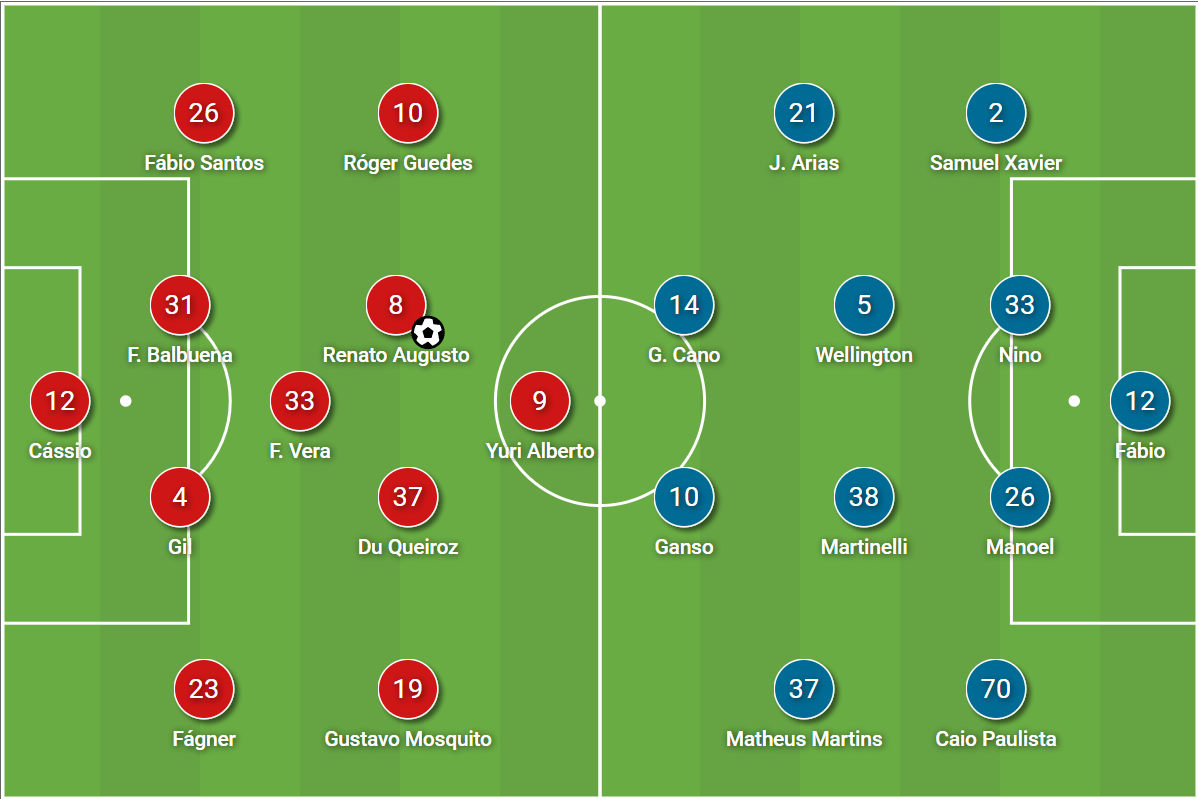
For the Tricolor Carioca, Diniz had a few absent players. With Luiz Henrique leaving earlier this summer to La Liga side Real Betis and Nonato recently signing with Bulgaria’s Ludogorets Razgrad, Flu have lost some key players. Additionally, young star André Trindade, who is reportedly monitored by Liverpool and Barcelona, missed the match due to suspension.
At any rate, Diniz still deployed a strong side. In the back, Fábio, Samuel Xavier, Nino, Manoel, and Caio Paulista were all unsurprisingly selected. In the midfield, however, there were drastic changes. Wellington played alongside 20-year-old Matheus Martinelli; a duo rarely used by Diniz. Further ahead, Ganso was flanked by Jhon Arias and promising prospect Matheus Martins, while German Cano was the centre-forward.
Aggressiveness
In the post-match press conference, Vitor Pereira said his side was finally playing the style of football he prefers. More specifically, the Portuguese manager is referring to the aggressive manner in which they defended. In the past, he has mentioned the exhausting schedule as the main reason for not deploying an intense defensive system. Since being knocked out of the Copa Libertadores, however, the side from São Paulo has had more time to recover and prepare for matches. Uncoincidentally, physically, this is the best they have looked since VP’s arrival.
Under these circumstances, Timão upped the intensity. As seen in the PPDA map below, they started off incredibly intense. In the first 15 minutes, they averaged a PPDA of 6.7. As the match went on, due to the score line, this naturally changed. Nonetheless, Corinthians’ high press was a significant factor in their 3-0 win.
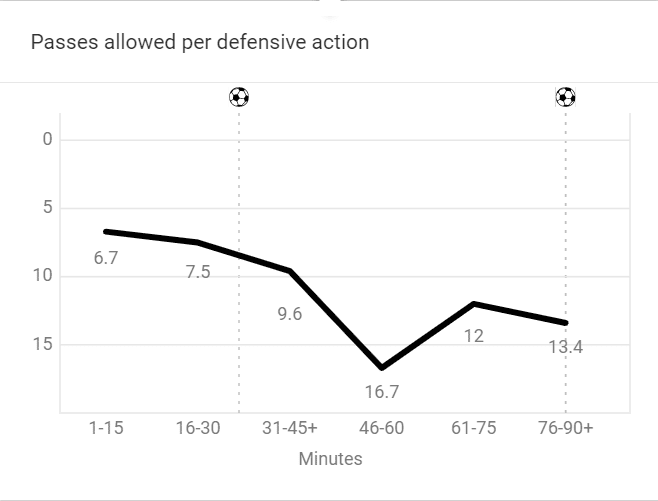
Diniz’s Flu is famous for their controlled approach to possession, carefully building out from the back. Corinthians were able to nullify this with a coordinated and aggressive high block. As a result, in numerous instances, the Tricolor were forced to gamble and play it long. This strategy essentially kept Fluminense from dominating the match as they usually do. This high block was led by their front three, with Yuri Alberto as the initiator.
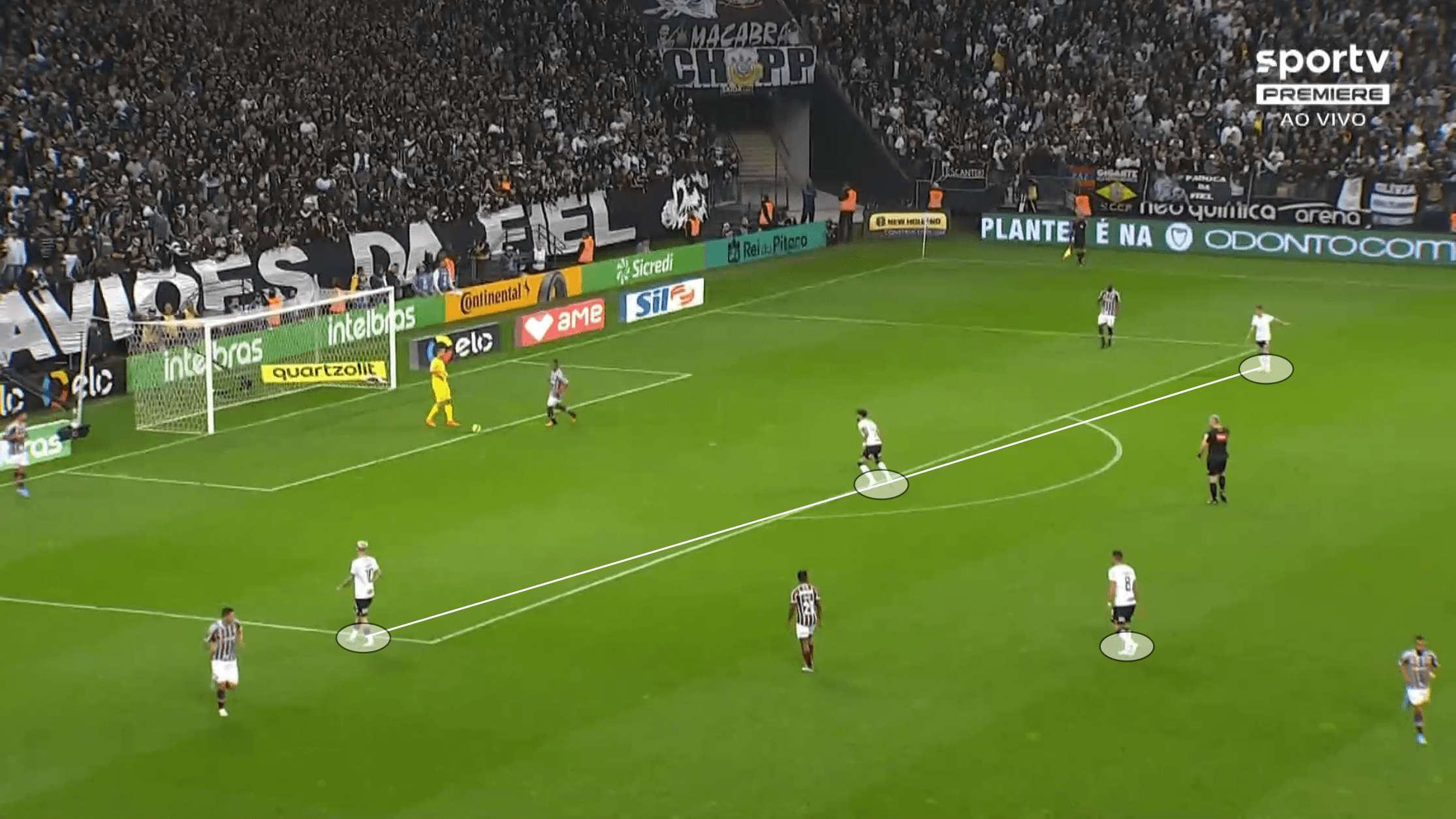
The midfield’s role was perhaps the key factor in the success of this high press. Just behind the front three, they were responsible for collectively pressing Flu’s chosen side. Since Fluminense play with a double pivot, they had a plus one superiority.
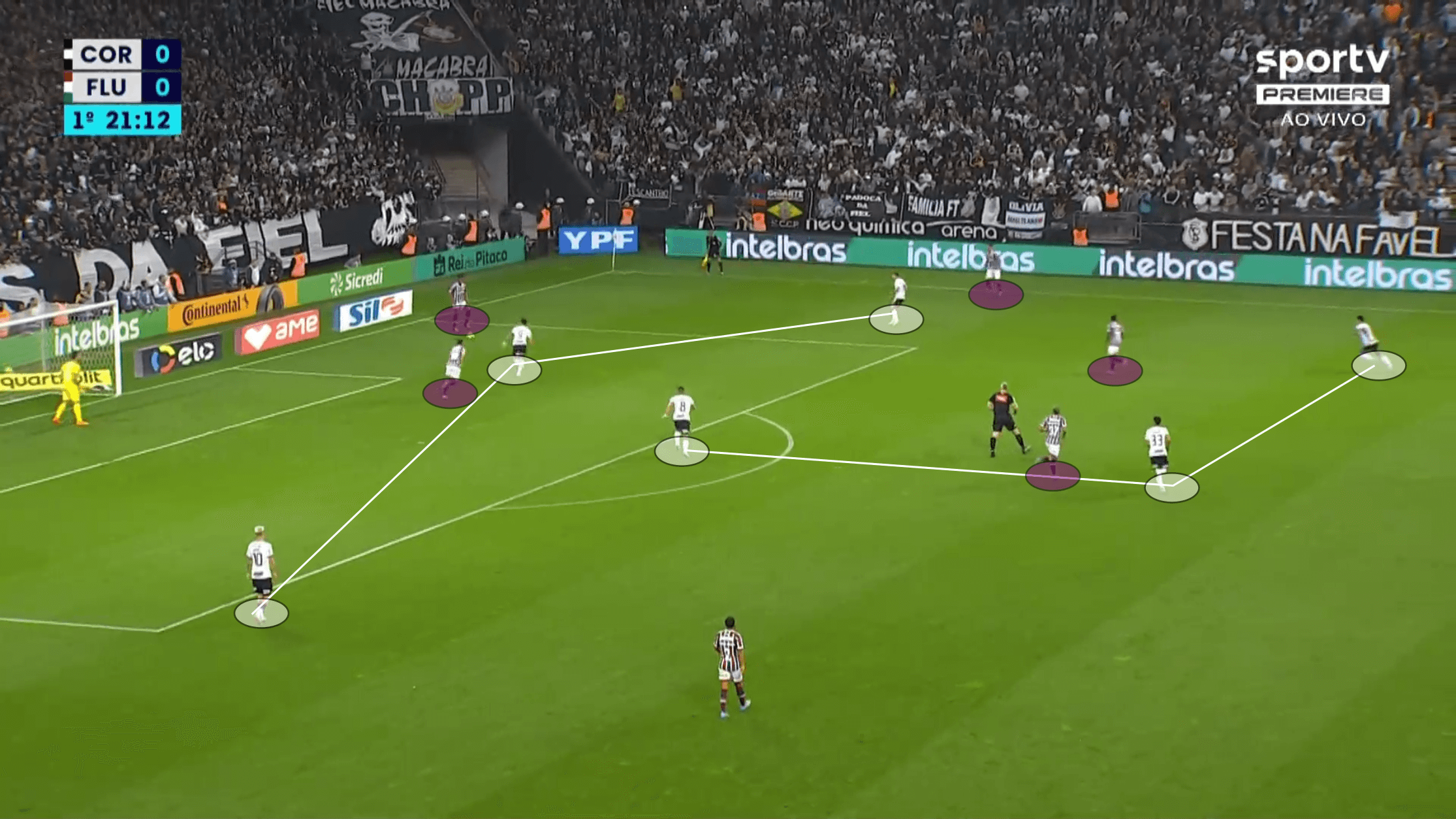
Numerical superiority is the defining characteristic of Diniz’s tactics. However, with this superiority in the midfield, Corinthians were able to match Flu’s numbers in the build up and keep them from creating their traditional overload on the sides.
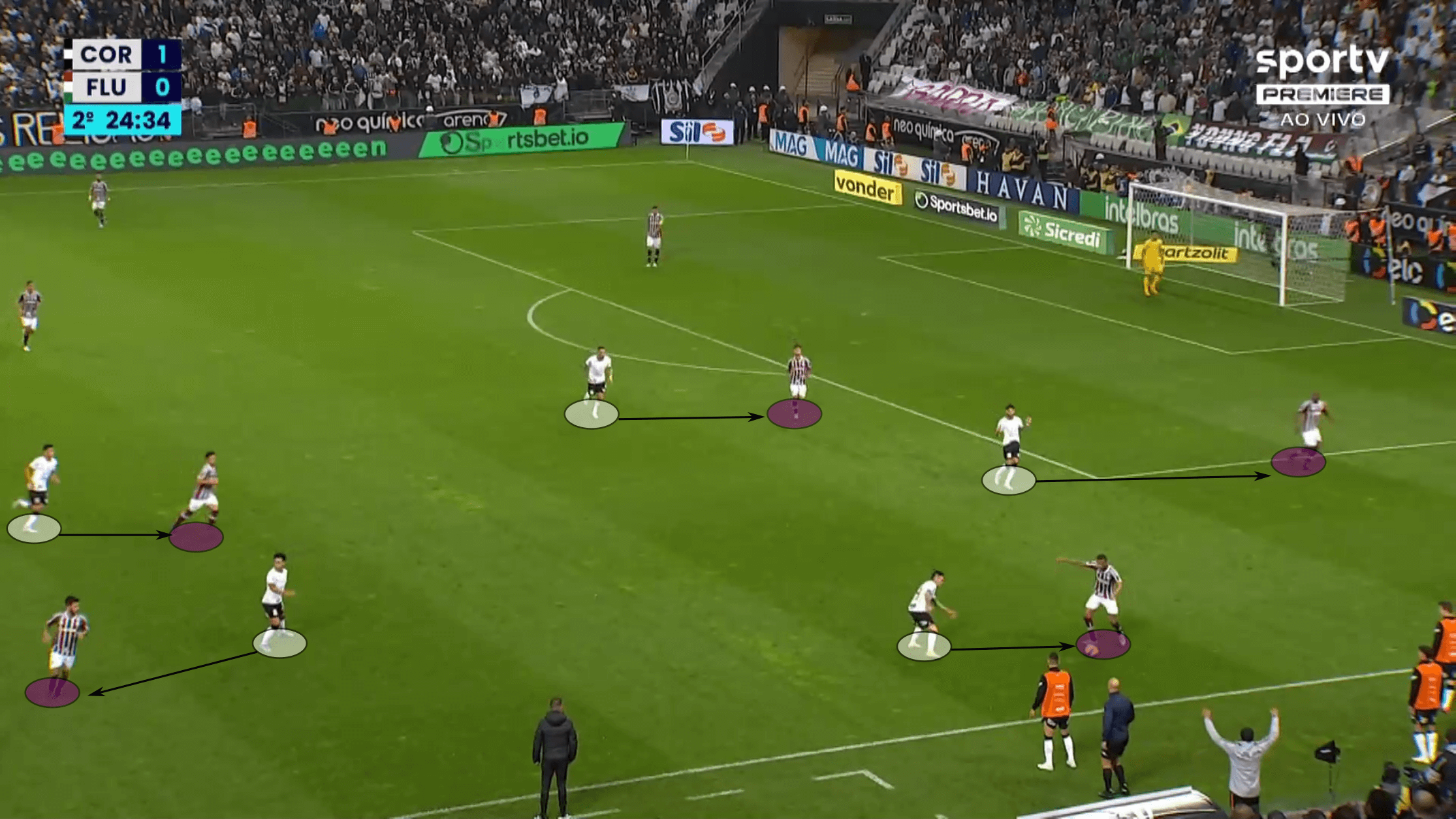
This aggressiveness was maintained when they dropped into a mid-block. With an alert and collective effort, they were able to keep the opposition from having time or space on the ball. Again, this made Fluminense uncomfortable and limited their threat in possession.
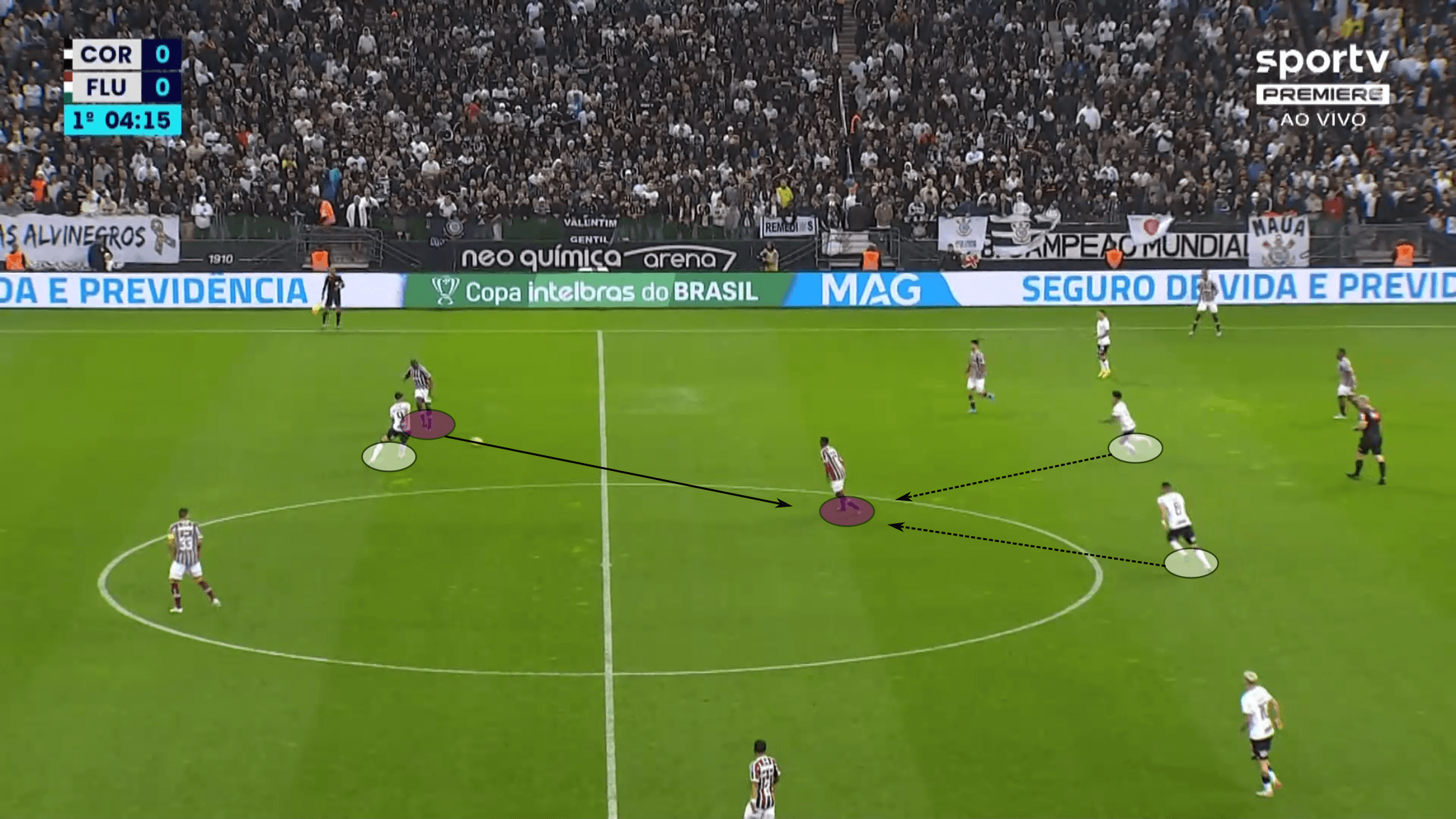
The effectiveness of this strategy can be attributed to a few factors. First and foremost, the Neo Química Arena is notorious for its aggressive atmosphere. Additionally, they were all individually switched on. While Vitor Pereira is responsible for the tactical aspect of it, the physical and mental factors were incredibly significant, and the individual is essentially responsible for that.
Defensive structure
It is virtually impossible to maintain such intensity for 90 minutes, and this is where the next factor behind their success came in. Corinthians were conscious without the ball, knowing when to drop deep and when to step up. In higher blocks, as we have seen, they were extremely coordinated and organised. Similarly, they were prepared to sit in low blocks and keep Fluminense from creating dangerous chances.
Despite having 63.88% possession, Fluminense only created 0.49 xG. According to Wyscout, they had 10 shots, with only four of them being on target. Given the large amount of possession they had, these metrics are very low. Additionally, in 2022, Diniz’s side have averaged 15.73 crosses per 90. In this match, they attempted a total of 24 crosses, with only three of them being successful. This desperate amount of crosses symbolises their inability to successfully create inside, as they usually prefer to.
In a low block, Corinthians reverted to a 4-1-4-1. This block was largely zonal, but with a slight man-marking influence. Fausto Vera was incredible in this match, and his work to protect the backline and sit in between the two lines of four was impeccable.
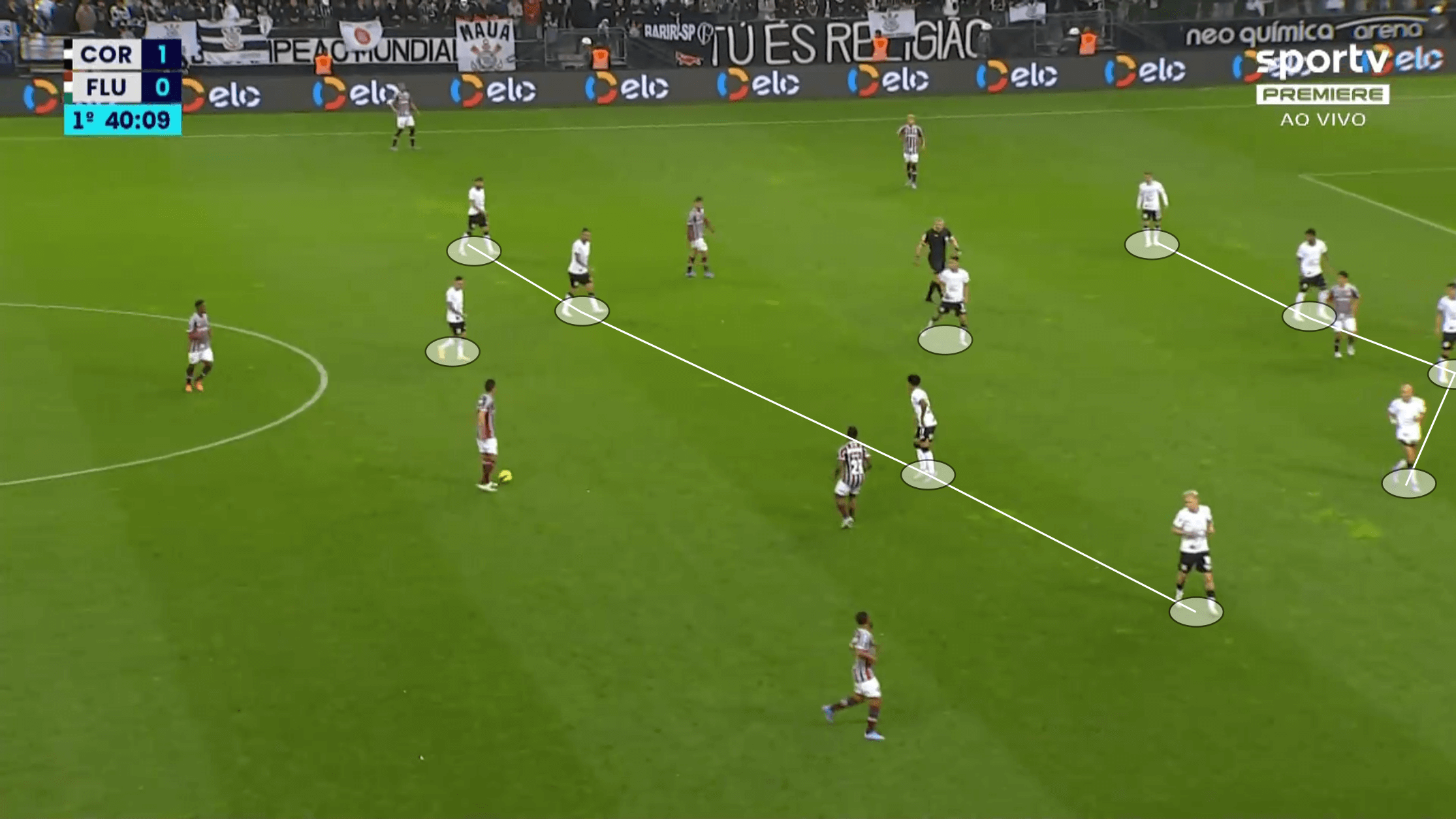
Being numerically inferior centrally, the Tricolor Carioca was forced wide. As a result, VP’s wingers had an important role defensively. Both were tasked with tracking back and sitting alongside their respective fullback.
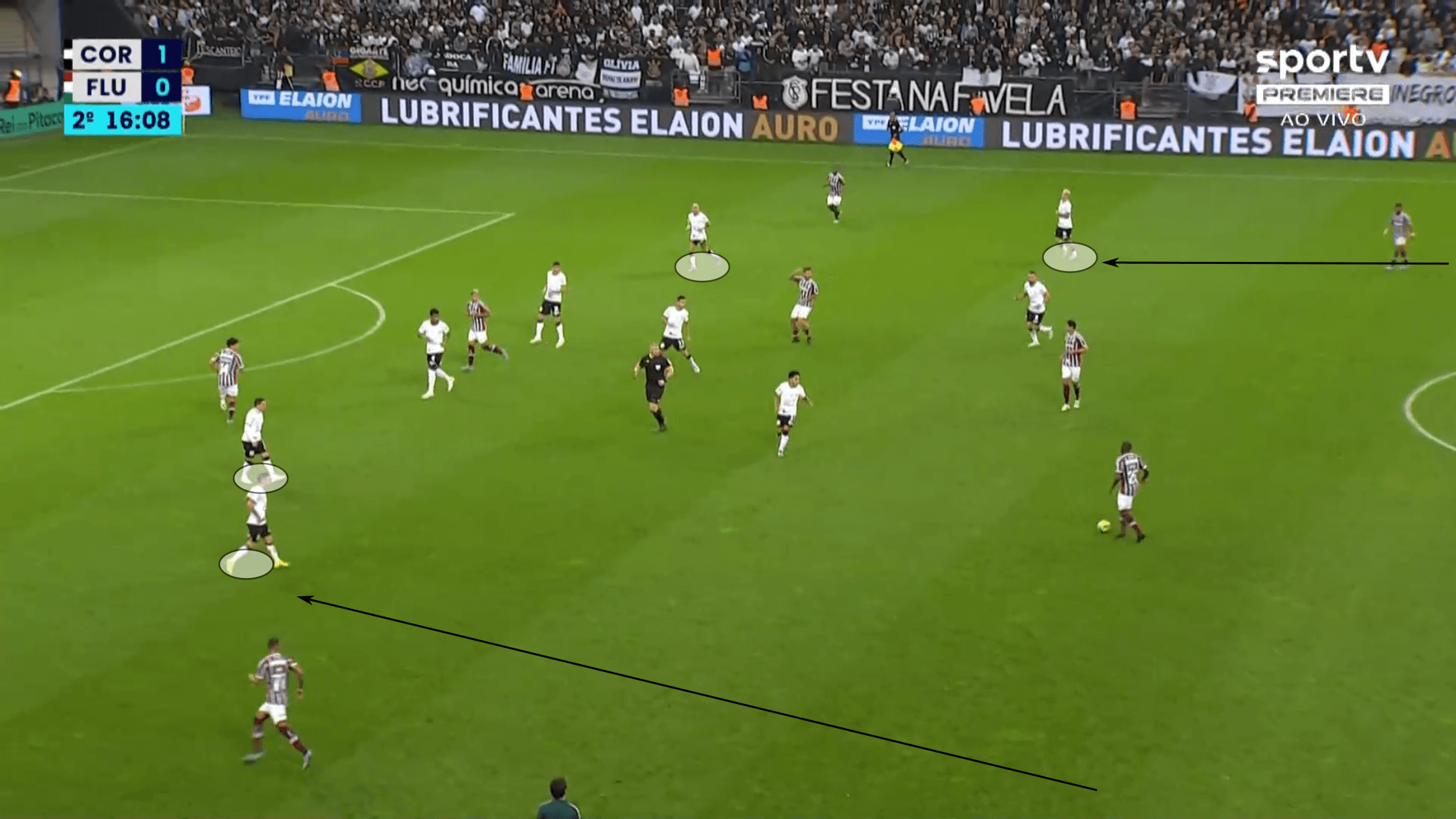
In addition to the two wide players dropping back to assist in the low block, the nearest midfielder would shift over to provide cover and keep Flu from creating their numerical superiority.
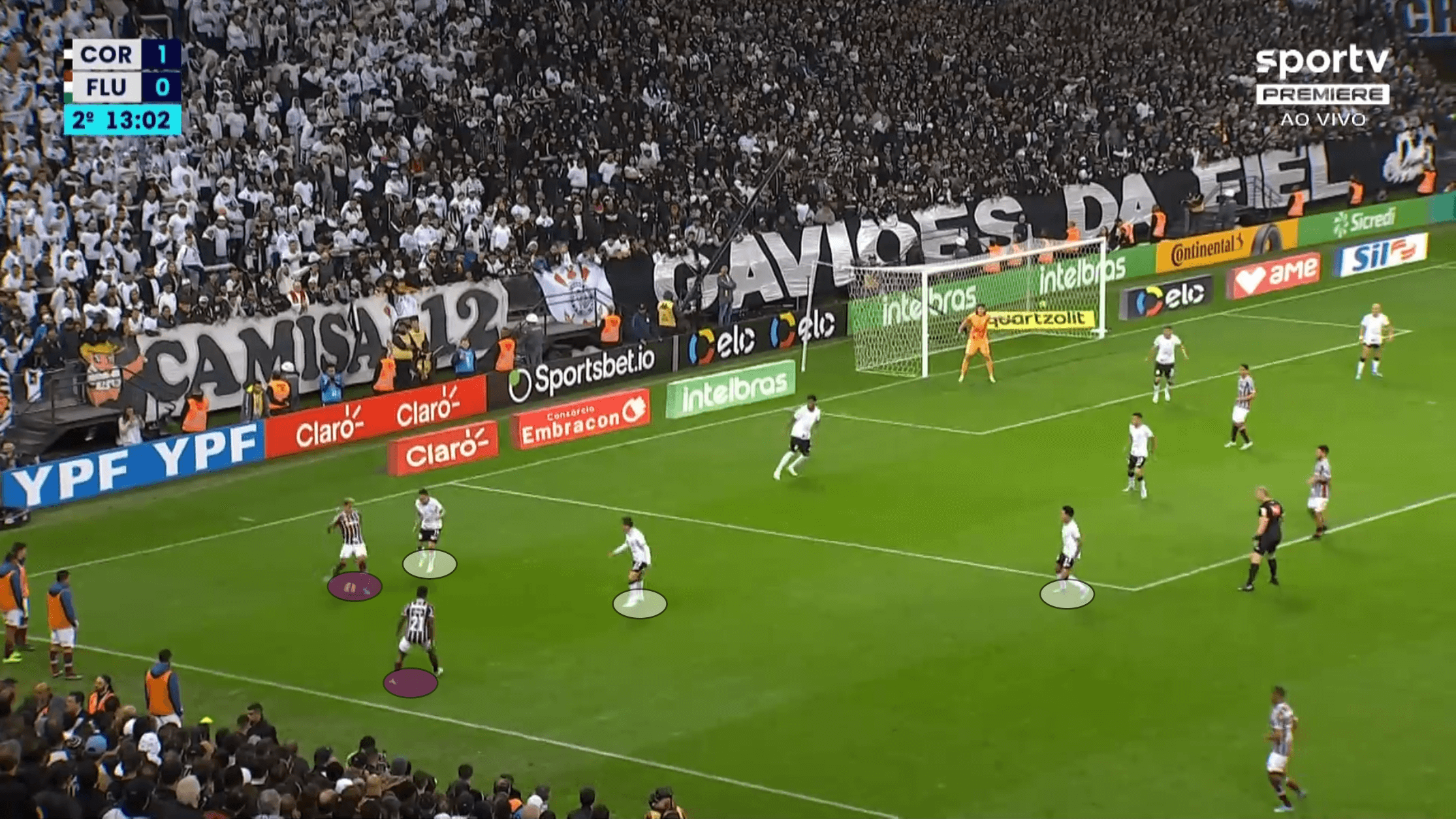
In addition to ensuring equal or superior numbers in the given zone, this also kept Flu from effectively entering the box. With only three of their 24 attempted crosses being successful, Corinthians kept Flu from getting good looks in the wide areas. In the instance below, with Mosquito dropping in, they have a 4v2 in that small area.
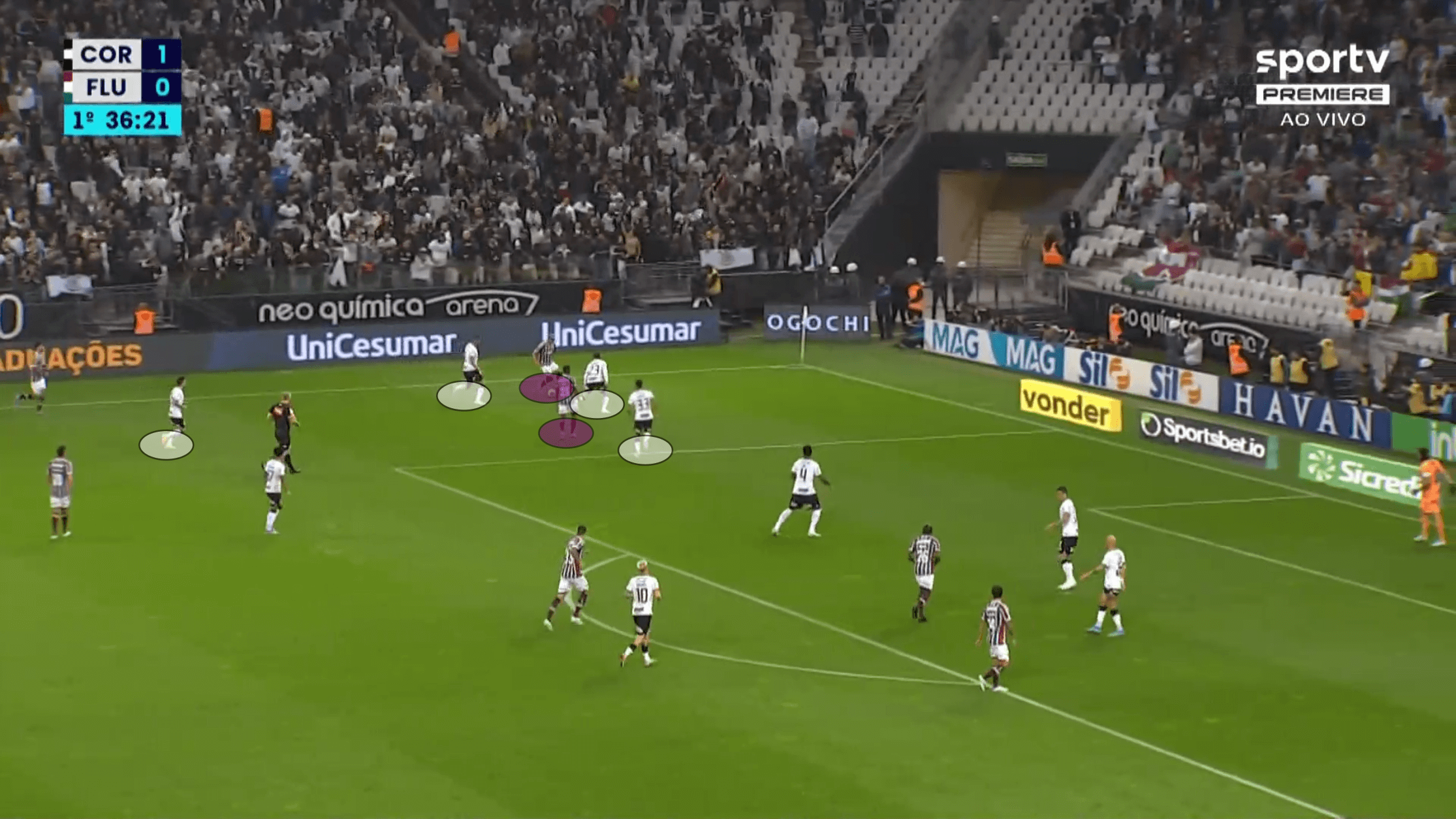
In fact, Corinthians constantly had numerical superiority in their low block. Again, with the help of the nearest midfielder and Fausto, they were able to overload the opposition. In the instance below, with Giuliano, who was introduced in the second half, Fausto Vera, and Du Queiroz, Corinthians shifted their entire midfield into this section of the pitch. This created a 5v4 superiority.
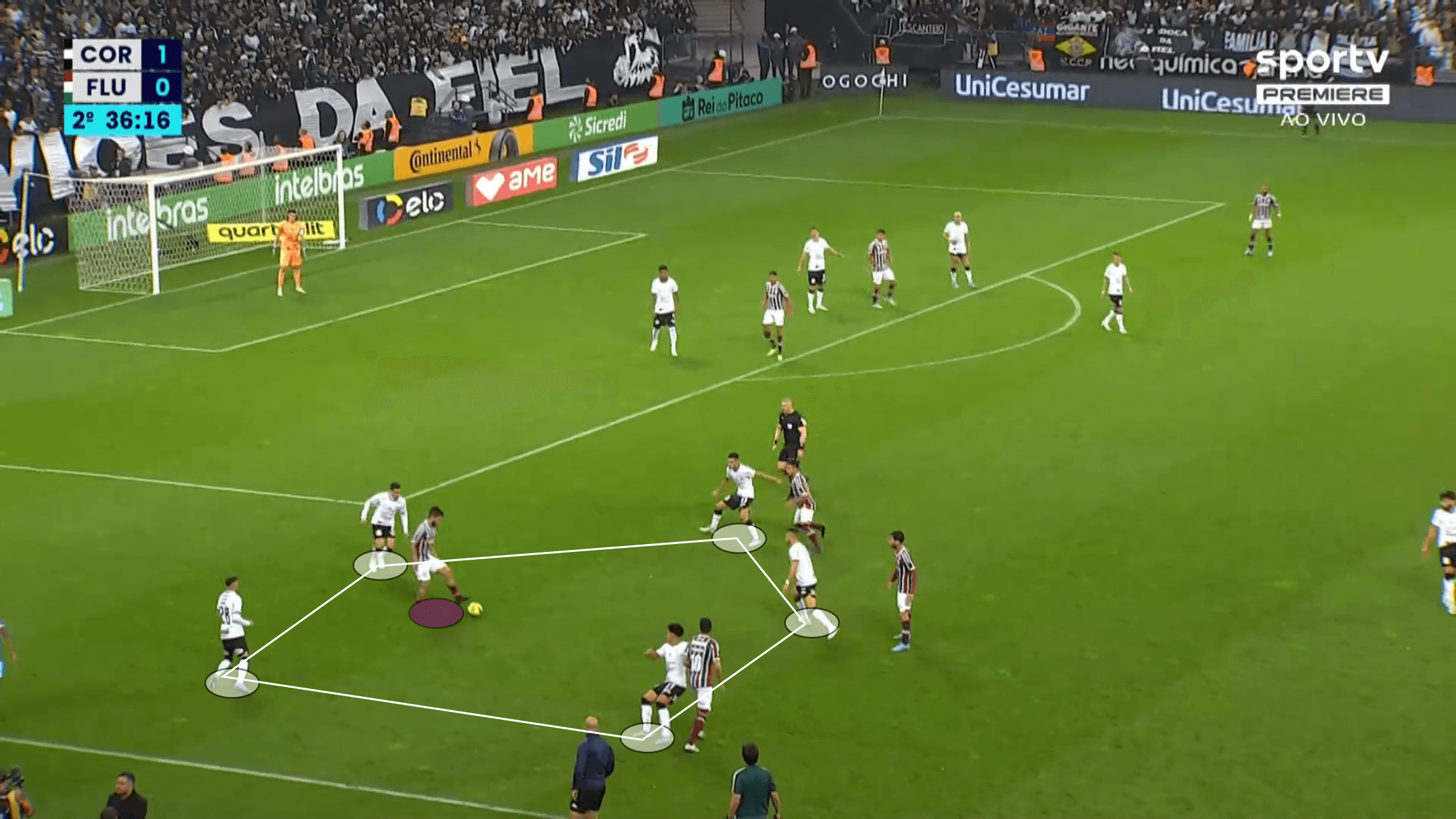
In possession
Compared to Fluzão’s 34, the Time do Povo only had 25 positional attacks. Additionally, with only 36.12% possession, they did not get many chances to create structured attacks. Consequently, despite having over 220 fewer total passes than the opposition, they only had 10 fewer progressive passes. Similarly, their 18.63 average pass length was higher than Flu’s 16.21. Finally, 11.25% of their passes were long compared to Flu’s 6.38%. Essentially, these various metrics are consistent in showing Corinthians’ time with the ball.
Three of their four counterattacks resulted in shots, and this is largely due to Yuri Alberto’s role. Though he is far from a traditional target man, he was excellent in being the reference in this direct approach. In a few instances, he was able to receive vertical passes. and either hold the ball up or lay someone off. The 21-year-old won four of his seven attempted aerial duels.
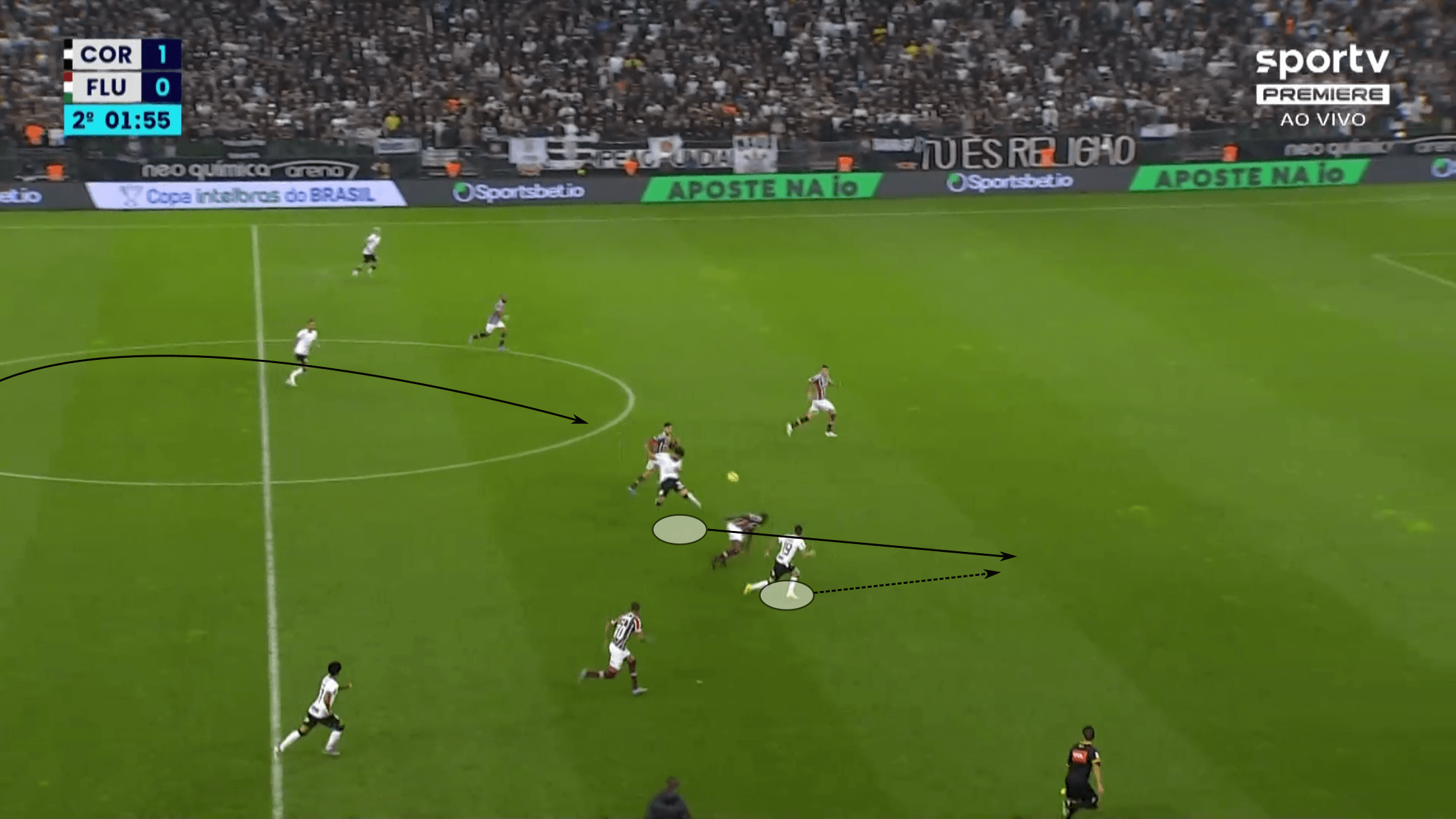
Additionally, the centre-forward was able to make himself available and help with the ball progression. In the instance below, he jumps off the centre-back to check in between the defensive lines. After receiving the pass from Adson, he immediately plays him back into space behind the fullback.
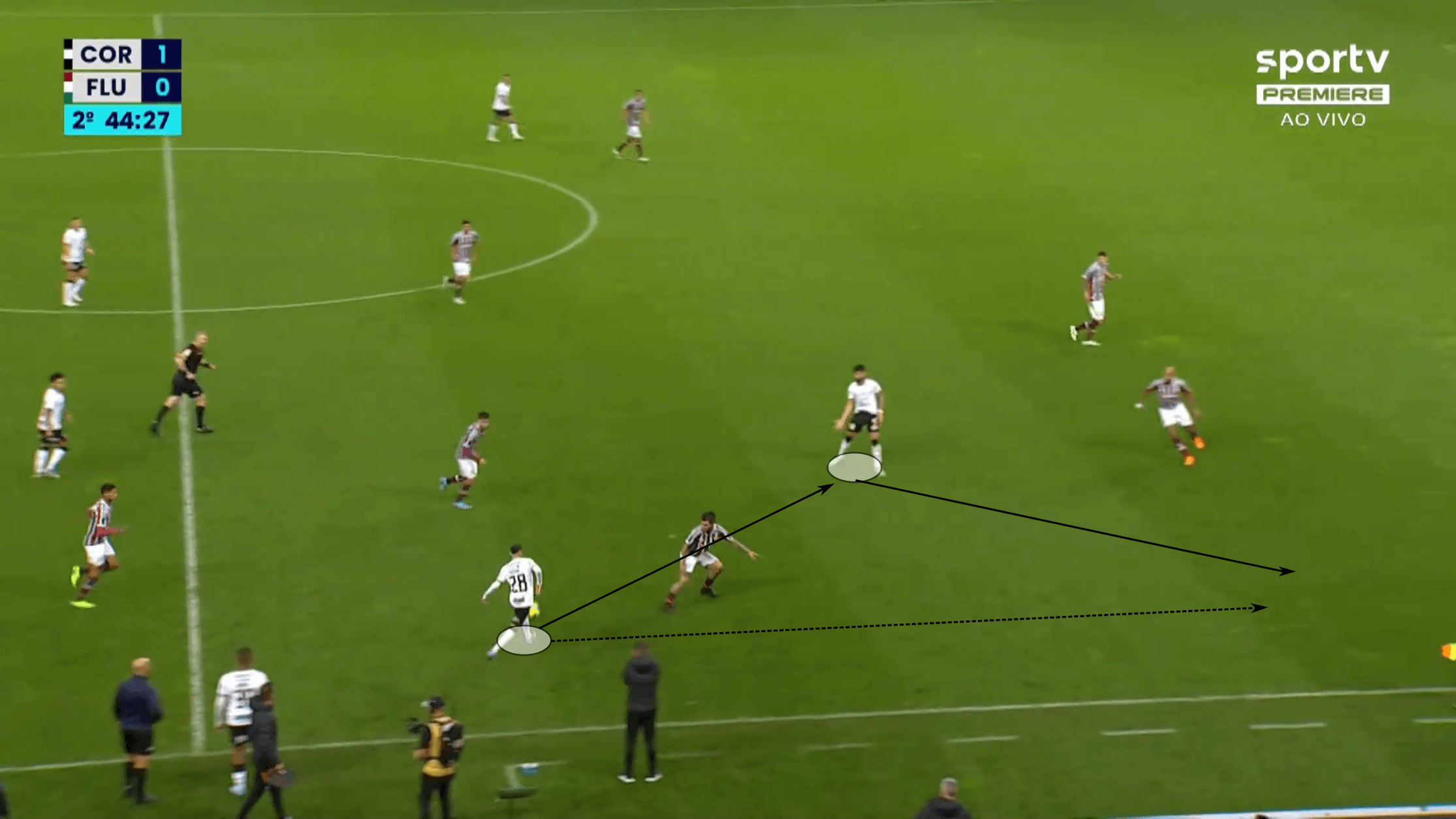
Furthermore, there was a significant shift in Corinthians’ strategy with the ball. Though the direction of the attacks was balanced, 57% of their xG came from attacking through the middle. Vitor Pereira’s side is characterised by their insistency on creating through the wide areas, but in this match, they were successful inside.
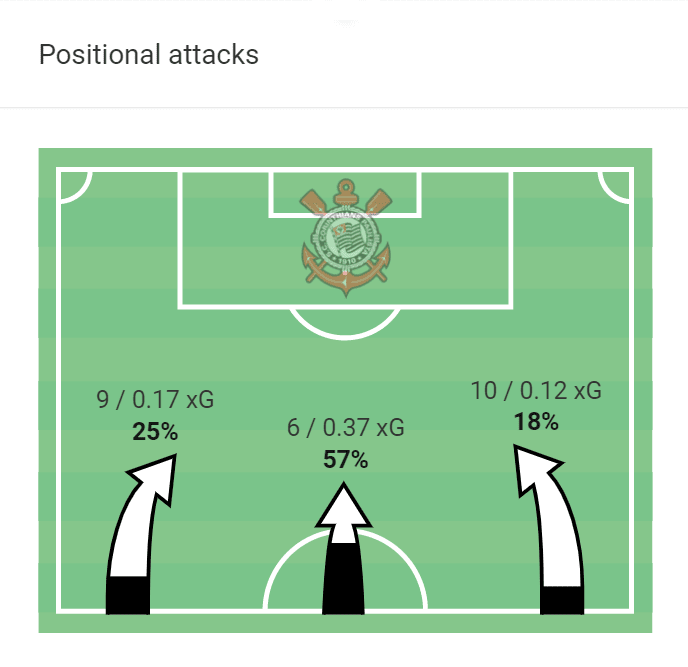
In the first half, there was a glimpse of this was Guedes fired a shot wide of Fábio’s goal. As seen below, Renato Augusto finds Du Queiroz as he drifts in between defensive lines. After receiving, Du lays Guedes off for a shot.
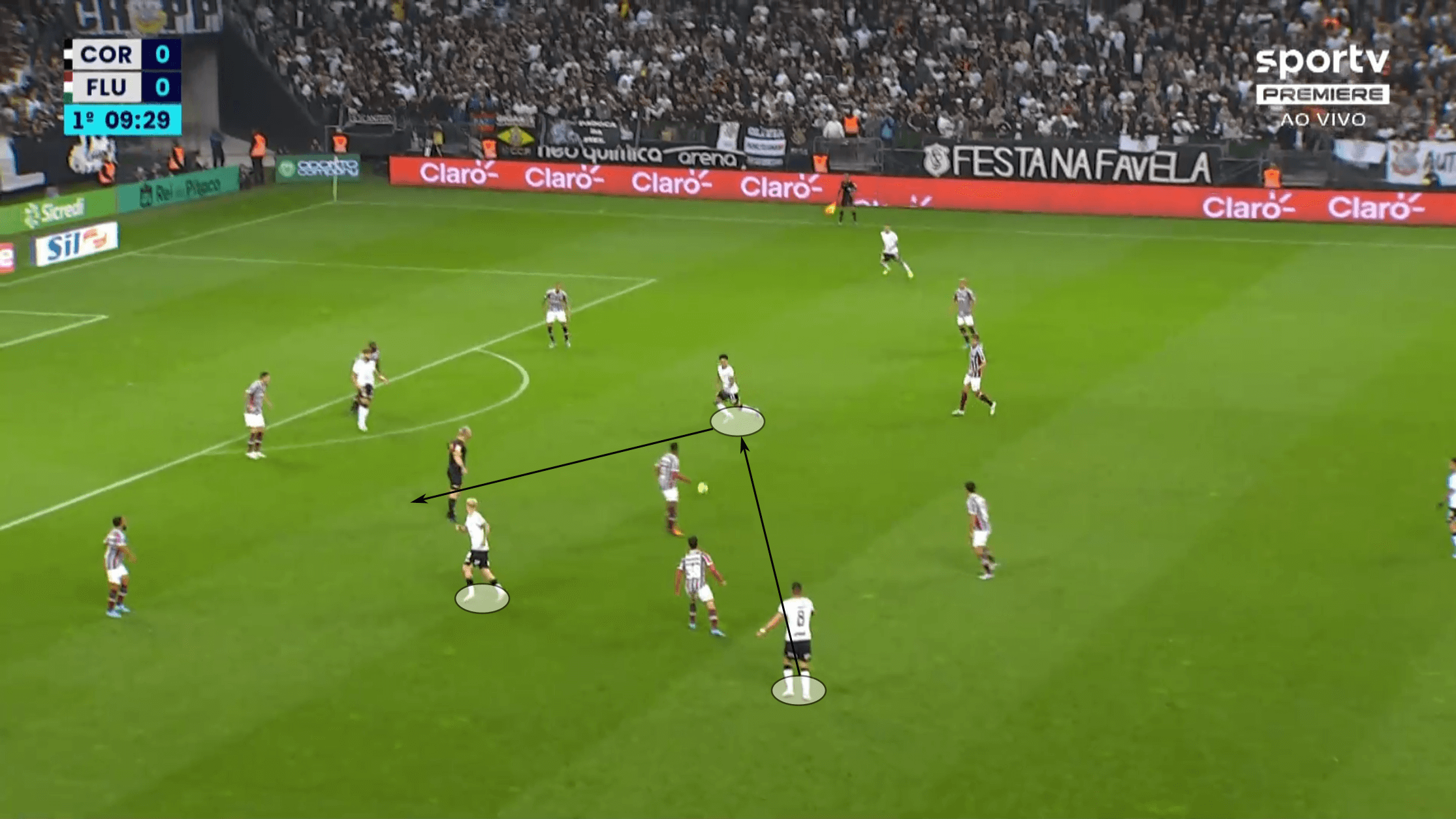
A more significant example came in their second goal. After receiving it wide, Adson dribbled it inwards. As the midfielder approached him, he passed it to Yuri, who had distanced himself from the centre-back. With a quick one-two, Yuri passes it back to Adson who then plays Giuliano through.
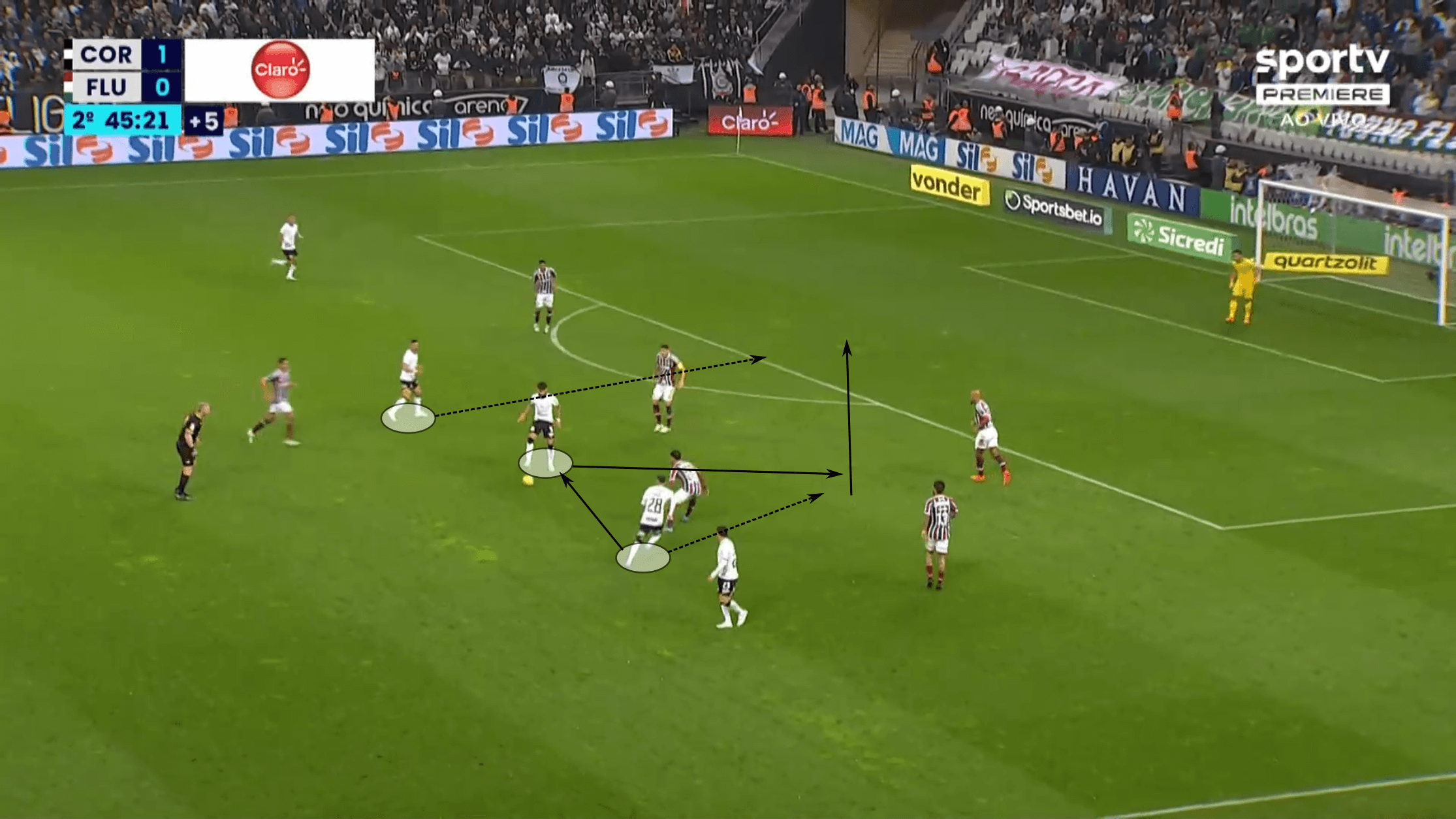
Conclusion
Vitor Pereira was extremely happy with his strategy for the second leg of the Copa do Brasil semi-final. With a conscious and well-rounded defensive system, he was able to nullify Diniz’s famous Fluminense side. With the ball, they were extremely direct and effective. In a fascinating tactical battle, Corinthians gained the edge over the Rio de Janeiro side and will now play Flamengo in the final.





Comments